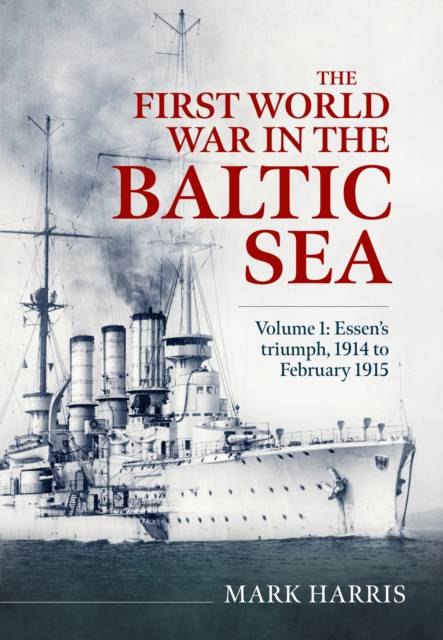
- Afhalen na 1 uur in een winkel met voorraad
- Gratis thuislevering in België vanaf € 30
- Ruim aanbod met 7 miljoen producten
- Afhalen na 1 uur in een winkel met voorraad
- Gratis thuislevering in België vanaf € 30
- Ruim aanbod met 7 miljoen producten
Zoeken
The First World War in the Baltic Sea Volume 1
Essen's Triumph, 1914 to February 1915
Mark Harris
Hardcover | Engels
€ 48,95
+ 97 punten
Omschrijving
A definitive history of the remarkable Baltic naval campaign, revealed through new research in Russian, German and British archives. In 1914, the Russian commander, Admiral Essen, inspired his outnumbered fleet. Supported by British allies, he forced back the German fleet, achieving a striking victory.
The small Russian fleet began the war on the defensive, facing potential destruction at the hands of the more powerful German fleet. Britain despatched a submarine force to support their ally.
Admiral Essen had to overcome defensive caution from his superiors and the disastrous loss of the cruiser Pallada. He forged a productive partnership with British allies. His leadership qualities and innovative tactical approach exploited modern naval technology and intelligence work to the full, helping to turn the tide.
The German commander, Prinz Heinrich, had to navigate fierce rivalries in the German war leadership to resource his fleet. His forces fluctuated constantly as detachments from the North Sea came and went. His subordinate, Admiral Behring, was tireless in carrying out numerous offensive operations and coastal raids. Cruisers clashed repeatedly. Losses mounted. The German flagship, Friedrich Carl, was sunk.
By February 1915, Essen had triumphed. The German fleet in the Baltic was on the defensive, with vital trade routes disrupted. When the Baltic ice thawed in the spring, they would return to attempt to wrest back control.
The small Russian fleet began the war on the defensive, facing potential destruction at the hands of the more powerful German fleet. Britain despatched a submarine force to support their ally.
Admiral Essen had to overcome defensive caution from his superiors and the disastrous loss of the cruiser Pallada. He forged a productive partnership with British allies. His leadership qualities and innovative tactical approach exploited modern naval technology and intelligence work to the full, helping to turn the tide.
The German commander, Prinz Heinrich, had to navigate fierce rivalries in the German war leadership to resource his fleet. His forces fluctuated constantly as detachments from the North Sea came and went. His subordinate, Admiral Behring, was tireless in carrying out numerous offensive operations and coastal raids. Cruisers clashed repeatedly. Losses mounted. The German flagship, Friedrich Carl, was sunk.
By February 1915, Essen had triumphed. The German fleet in the Baltic was on the defensive, with vital trade routes disrupted. When the Baltic ice thawed in the spring, they would return to attempt to wrest back control.
Specificaties
Betrokkenen
- Auteur(s):
- Uitgeverij:
Inhoud
- Aantal bladzijden:
- 314
- Taal:
- Engels
Eigenschappen
- Productcode (EAN):
- 9781804519103
- Verschijningsdatum:
- 15/12/2025
- Uitvoering:
- Hardcover
- Formaat:
- Genaaid
- Afmetingen:
- 170 mm x 244 mm
- Gewicht:
- 932 g

Alleen bij Standaard Boekhandel
+ 97 punten op je klantenkaart van Standaard Boekhandel
Beoordelingen
We publiceren alleen reviews die voldoen aan de voorwaarden voor reviews. Bekijk onze voorwaarden voor reviews.








